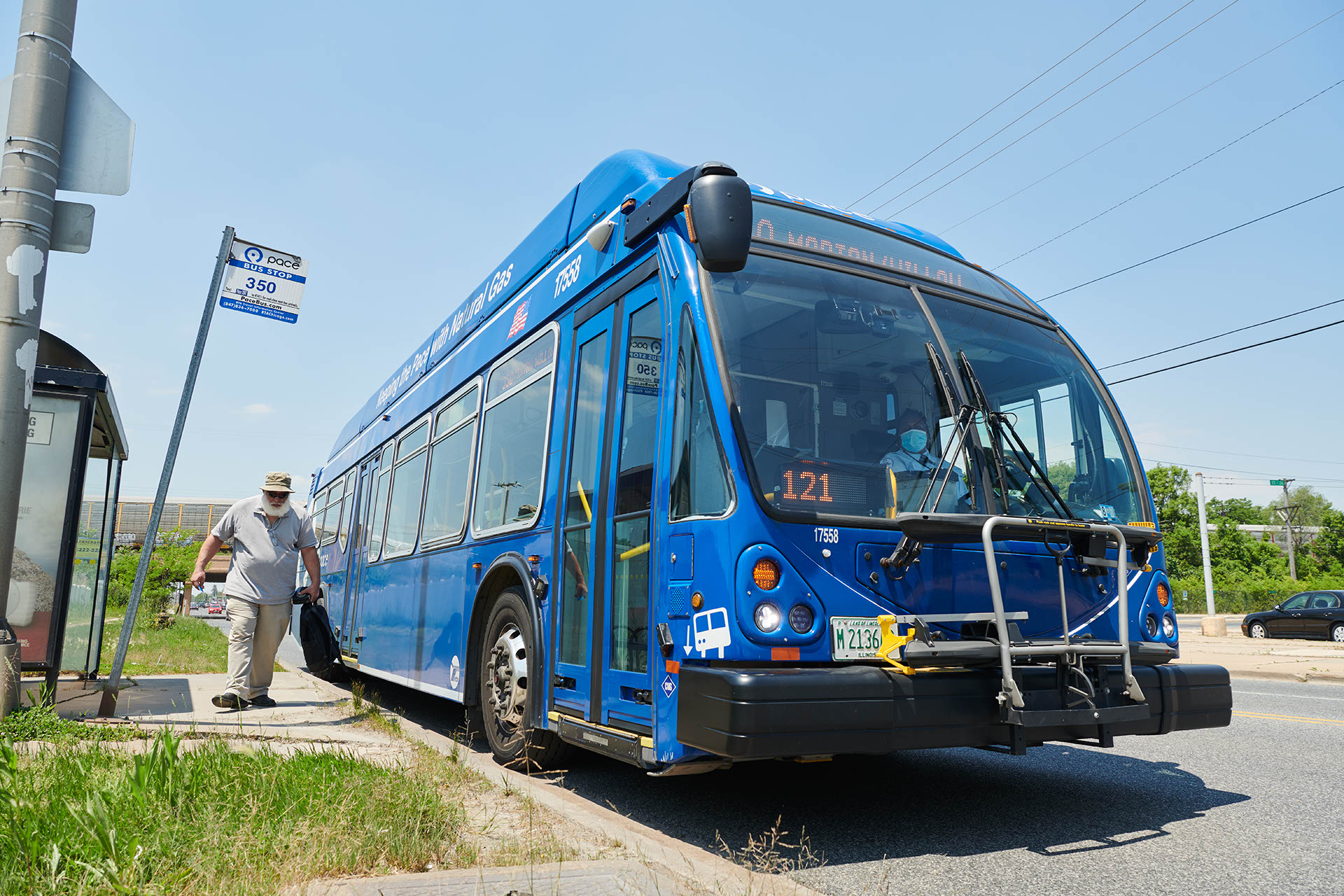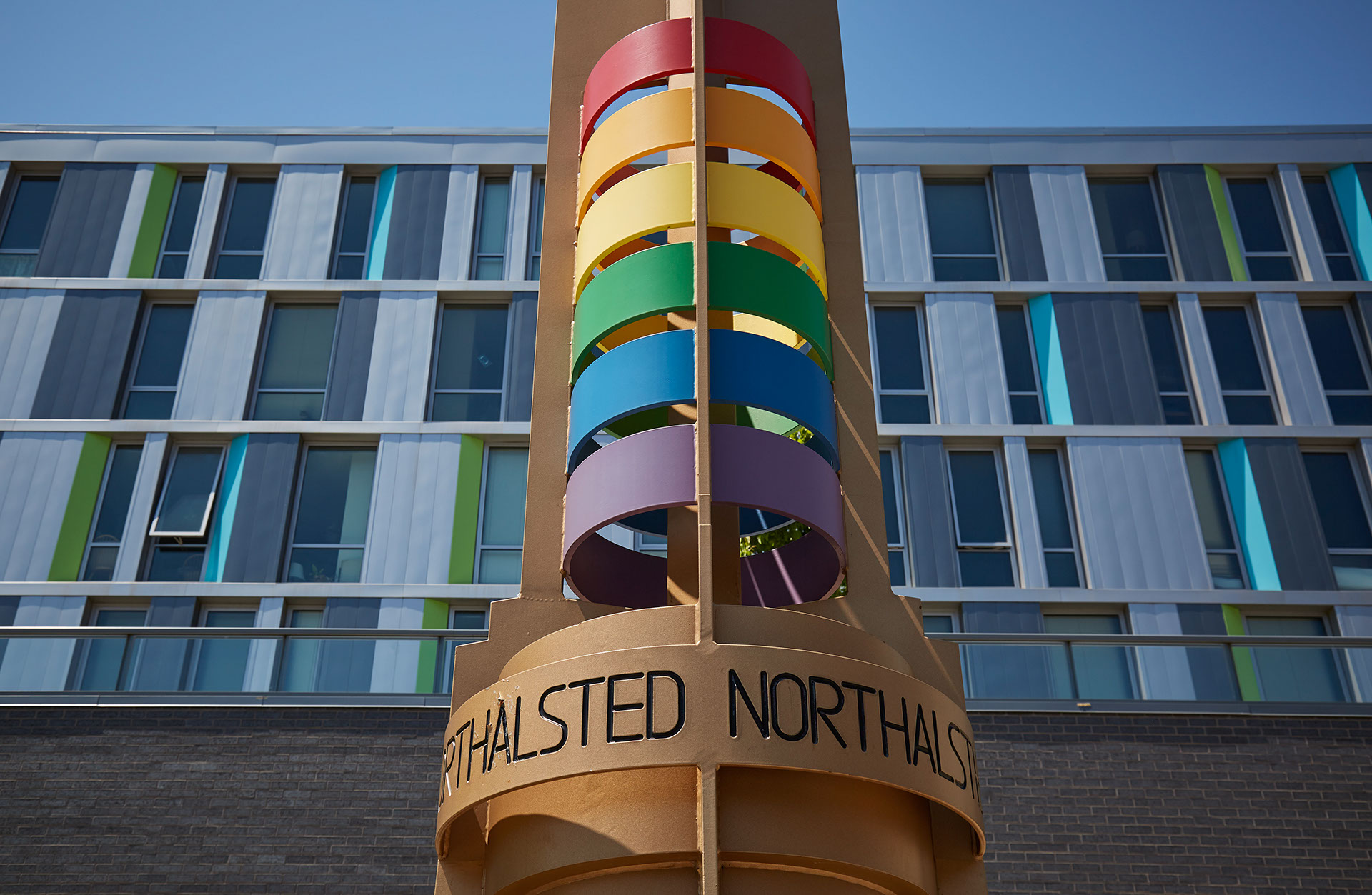LGBTQIA+ (lesbian, gay, bisexual, transgender, queer, intersex, asexual) communities experience a range of challenges with transportation, safety, and housing. According to U.S. Census Household Pulse Survey data for October 2021, more than half a million people in northeastern Illinois identified as lesbian, gay, bisexual, or transgender. Nearly a quarter of a million additional people chose “other” rather than the provided options, indicating the LGBTQIA+ community in the region is even larger than current data categories reflect.
By engaging with LGBTQIA+ people and making data-driven decisions, planners can design more inclusive, equitable spaces. This article reviews recent surveys and data to highlight a few areas to consider when tackling local planning, transportation, and housing issues.
Challenges LGBTQIA+ residents face

Public transit and harassment
Public transportation presents safety and accessibility challenges for LGBTQIA+ people in comparison to non-LGBTQIA+ people. In the 2019 Chicago LGBTQ community needs assessment, less than half of Black LGBTQIA+ respondents felt safe when using train or bus services.
Planners must work with LGBTQIA+ people — and particularly people of color — to design transportation that is safe and accessible for everyone. As one example, states like Ohio have implemented programs like COTA Plus, where passengers book affordable shared vehicles from a designated service area.
Survey participants also cited difficulty accessing community services, affordable healthy food, and culturally responsive, comprehensive health care. These challenges are particularly salient for LGBTQIA+ people with disabilities, as one participant stated there is a need for “disability friendly and accessible queer spaces.” Planners should ensure transportation options provide access to crucial services and work with municipalities to create spaces that can be enjoyed by all people.
Safety concerns extend beyond public transit. The National Street Harassment Report found LGBTQIA+ people were more likely to experience verbal and physical street harassment than those who identified as heterosexual. Safety concerns extend into public accommodations as well, as 12 percent of LGBT people have reported avoiding restaurants due to fear of discrimination. By working with the LGBTQIA+ community, planners can help identify the root cause and develop solutions to improve sidewalk and street safety.
Housing and homelessness
In Chicago, both youth and adults identified gentrification, lack of affordable housing, and homelessness as issues facing local LGBTQIA+ communities. Nationally, LGBTQIA+ youth experience higher homelessness rates in comparison to non-LGBTQIA+ peers. Homelessness rates are even higher among LGBTQIA+ youth of color. Only a minority of states and localities prohibit sexual orientation or gender identity discrimination in housing, lending, and/or homeless services.
In addition to prohibiting discrimination, municipalities can dedicate funding toward housing initiatives specifically for LGBTQIA+ people. In Philadelphia, the Office of Homeless Services’ Way Home Project provides one year of rental assistance to support LGBTQIA+ people as they transition out of homelessness. Way Home Project participants also receive social services including education, job training, and mental health support them in their transition. Both rental assistance and social services are important ways to improve housing stability and quality of life outcomes for LGBTQIA+ people.
Housing disparities continue into adulthood, as LGBTQIA+ adults report lower rates of homeownership than heterosexual peers. A national study found 22 percent of LGBTQ people reported being personally discriminated against because of their sexuality or gender identity when trying to rent a room or apartment or buy a house. Planners and municipalities need to fully understand housing barriers for LGBTQIA+ people in northeastern Illinois to produce equitable housing outcomes.
Nonprofit and community organizations can serve as partners in this work. For example, SAGE, a national advocacy and services organization for LGBT elders, has built LGBT-friendly housing in New York City and helps builders nationally to do the same. Municipalities should engage with organizations such as SAGE to identify specific challenges and find solutions for LGBTQIA+ people locally.
Improving LGBTQIA+ community engagement

Planners, government agencies, and research institutions have made progress in recent years to better understand and intentionally plan for the issues faced by the LGBTQIA+ community. In 2015, the City of Berwyn created an initiative to encourage LGBTQIA+ people to move to the community. Planners attended the Chicago Pride Parade to engage with LGBTQIA+ people and explain why Berwyn is a desirable place for them to live. This demonstrates how municipalities can direct resources toward creating more inclusive spaces.
Academic research practices can also inform equitable planning. The Jane Addams College of Social Work at the University of Illinois at Chicago was part of a collaborative effort called the 3/40 Blueprint. This project produced a blueprint to reduce homelessness among LGBTQIA+ youth nationally as well as resources for surveying and engaging LGBTQIA+ people.
Intake forms and survey tools should ask respectful questions about gender identity, offer an “other” category with an ability to write in what it means, and provide youth the opportunity to enter a chosen or preferred name in addition to their legal name. Municipalities should use recommendations and resources from the 3/40 Blueprint to lower homelessness rates among LGBTQIA+ people and particularly youth.
Nonprofit and community organizations can also be valuable partners in this work. Howard Brown Health in Chicago surveyed hundreds of LGBTQIA+ south side residents to identify needs and preferences for a new health care and social services facility. Its methodology included anonymity, online surveys, and stakeholder interviews, ensuring safety and comfort for participants.
In August 2021, the U.S. Census Bureau added questions about sexual orientation and gender identity to the Household Pulse Survey. Results from this survey are available for the Chicago-Naperville-Elgin region and cover topics such as rent payment and health care access. In August, 24 percent of gay or lesbian people reported they were not caught up on rent payments. Additionally, 34 percent of people who reported their sexual orientation as “I don’t know” also reported not being caught up on rent payments.
Disparities exist in health care access too, as the insurance rate is lowest for people who reported their sexual orientation as “something else” rather than the provided options of gay or lesbian, straight, bisexual, or “I don’t know.” People who identified their sexual orientation as “something else” were nearly three times as likely to be uninsured as people who identified as straight.
With this data, planners can begin to pinpoint problems impacting LGBTQIA+ people in the region to inform local outreach and planning. This survey also provides detailed breakdowns of response data so planners can understand how issues affect different groups within the LGBTQIA+ community.
How local government can support LGBTQIA+ residents
Engaging with LGBTQIA+ people in meaningful ways is critical to advancing equity. Planners and municipalities can use data from the U.S. Census Bureau, advocacy organizations, and educational institutions to inform decision making. Transportation, safety, and housing challenges must be met by innovative solutions to ensure inclusive growth and prosperity throughout northeastern Illinois.
Municipalities should:
-
Adopt and enforce anti-discrimination laws to protect LGBTIQIA+ people.
-
Direct funding and resources to address the challenges LGBTQIA+ people face including housing and transportation.
-
Collaborate with local and national LGBTQIA+ organizations to identify barriers and implement best practices.